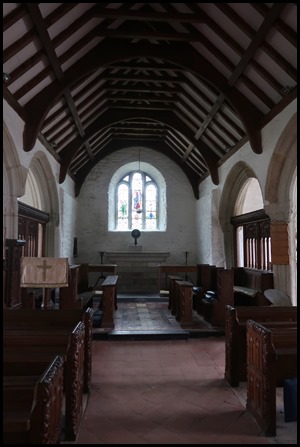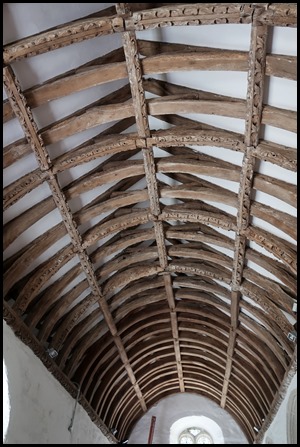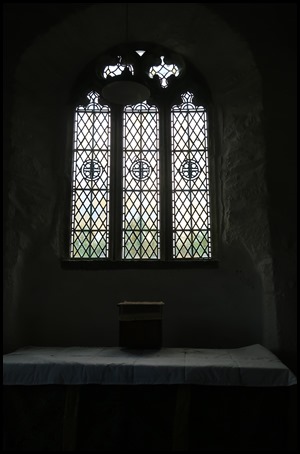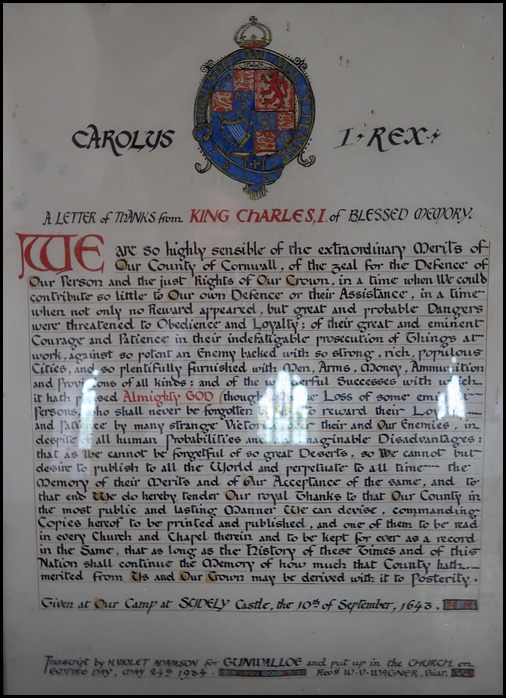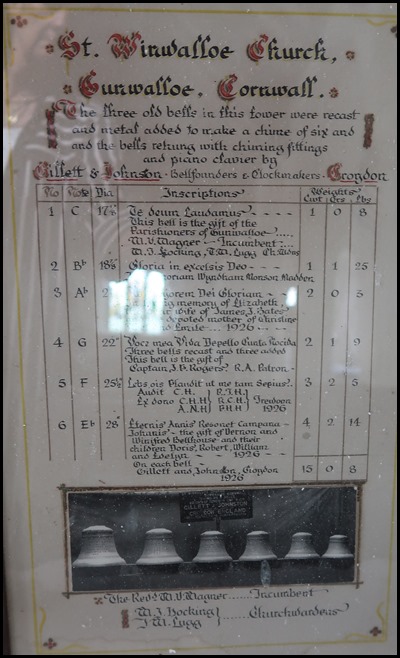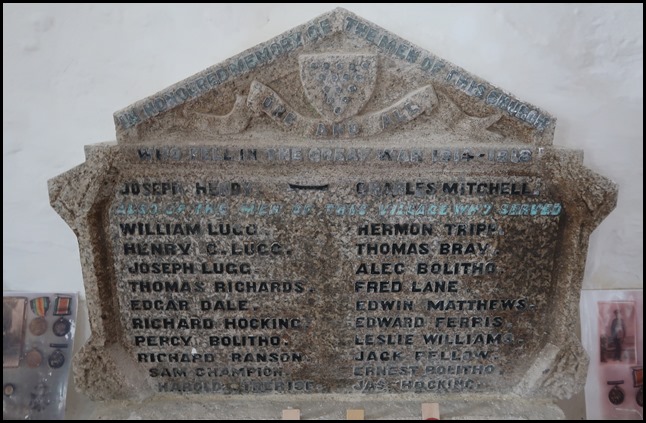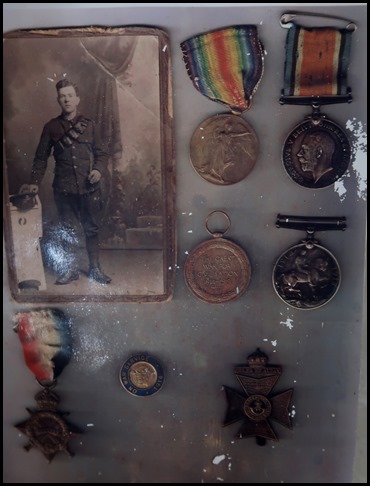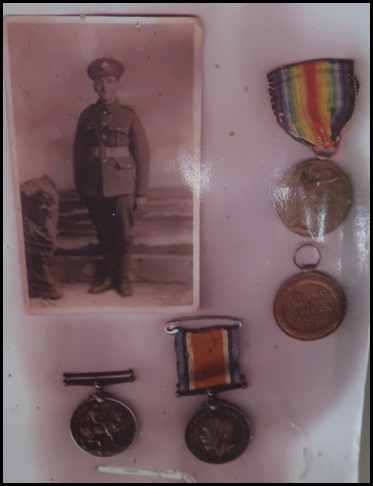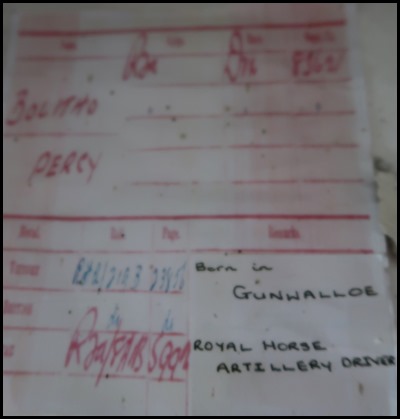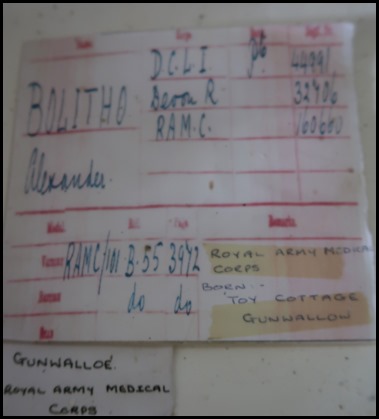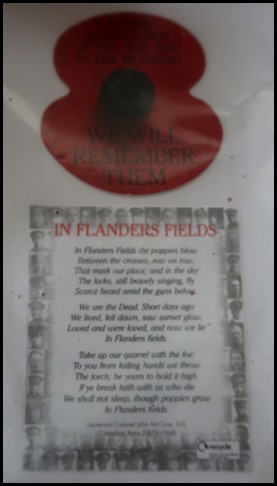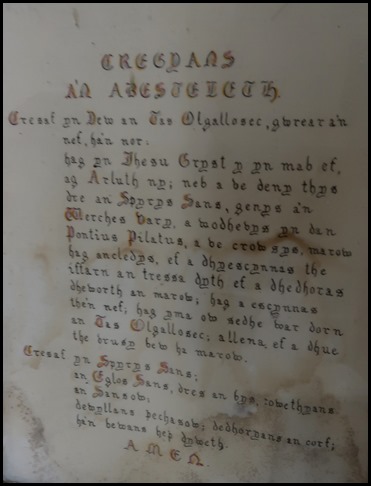Cute Beach Church

|
St Wynwallow or St Winwaloe,
Church of
Storms 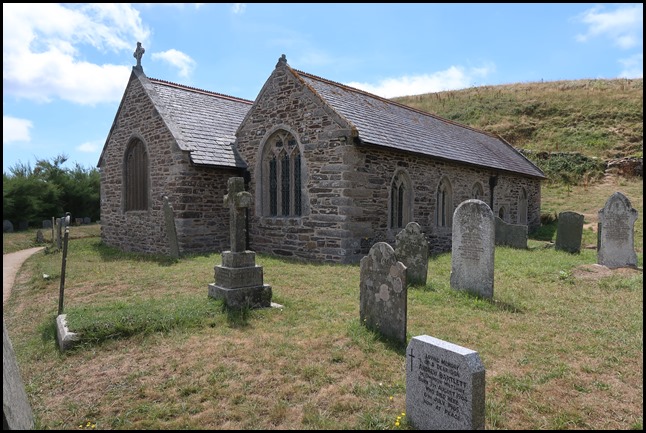 As we bimbled down to the
beach at Gunwalloe we couldn’t resist exploring this gorgeous little church. (Later I find out about
it)
 To the right part of the
graveyard.
 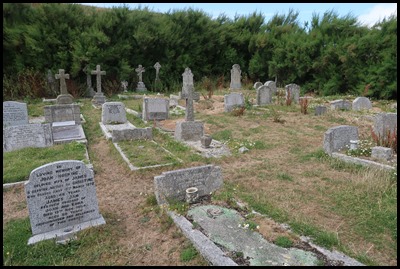 Sad story of Ronald and then to the left
corner.
 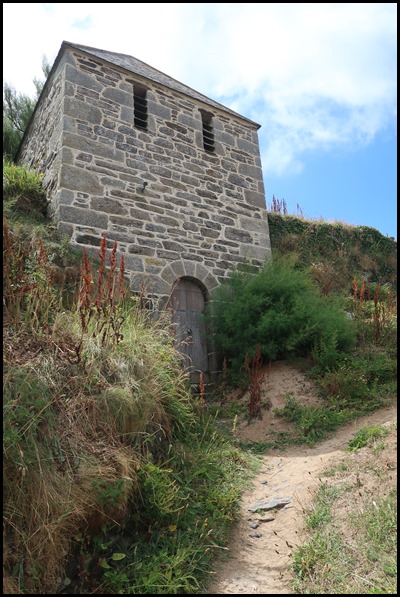 We saw a chap with a bad right arm (later martin found a picture
he had taken – in better shape than today). Beyond the church is an ancient,
detached bell tower that may pre-date the fifteenth
century.
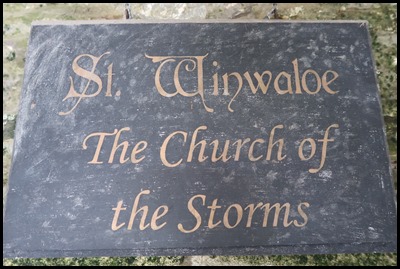 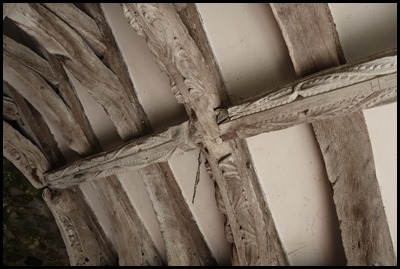 The slate sign at the entrance and wonderful old timbers in the
porch.
Cornwall Historic Churches
Trust writes:- Dedicated to the popular Breton saint Winwaloe, the first
abbot of Landevennec, Gunwalloe was a chapelry of Breage when first recorded in
1332. A holy well was once sited near the porch. Probably the church began as
the manor chapel of Winnianton which lay close by. It is the only Cornish church
actually sited on a beach.
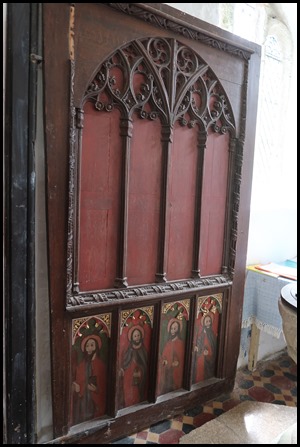 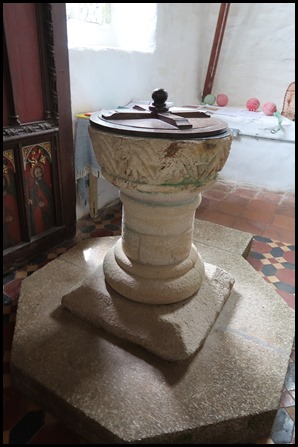  Screen, font and confessional
The church, which probably started as a chancel and nave (part of the 13th century church perhaps surviving at the west end), has two fonts. One Norman of Pentewan stone with a round bowl with stylized tree of life carving was found in the churchyard, the other with a granite octagonal bowl appears to be its 15th century replacement. The tower may be the oldest feature, perhaps dating to pre 1400. Other detached Cornish towers can be seen at Feock and Gwennap. Gunwalloe church is a perfect example of a three hall church of 15th to early 16th century date and there is no evidence that it went through a cruciform stage first like most Cornish churches. Built on a miniature scale behind a cliff, Gunwalloe is only 54 feet in length or about a third the length of Bodmin, Cornwall’s largest parish church today. Both aisles are of similar width to the nave and chancel and may recycle earlier windows. The early 16th century porch has octagonal panelled jambs like Mylor. Clearly the church was intended to have a two or three stage-tower at the west end but this was never built although a flat platform was made for the projected tower by cutting away rock at the west end of the nave. A rood screen, bearing an image of the crucifixion, once divided the church in two with the chancel and north and south chapels lying to the east. Two complete bays of this screen which once depicted the twelve apostles were recycled as north and south doors to the church. The style of the eight surviving apostles painted at the base is entirely consistent with Cornish screen painting at Budock, Lanreath and Mawnan with moustache-less beards being shown in all cases. There is no evidence at all that these panels came from the wreck of The St Anthony, the King of Portugal’s treasure ship, though wreck money could have helped pay for them as the ship was wrecked at Gunwalloe on 19th January 1527. The most probable reason why the church was not completed as planned was that the Reformation intervened. On 18th April 1548 an inventory of church goods was made by order of the government. This showed that the church had a cross, two chalices, a blue velvet cope, two sets of vestments of silk and satin, a silk streamer and a silk banner, two candlesticks and three bells. All the medieval bells survive. 18th century churchwardens’ accounts show that sand had to regularly removed from the churchyard and the church had acquired a west gallery by 1775. This probably survived until 1869 but the only instrument noted was a bassoon. The church was re-roofed, some windows replaced and the chancel extended east by two feet in 1870-1 when the church was restored by Sedding. Parclose screens, stalls, benches and oak pulpit are by Messrs. Read of Exeter.
Right-hand altar, roof and stained glass window above altar.
Arches.
A Letter of Thanks from Charles I dated 1643.
Information about the church bells. A list of vicars dating back to the 1200’s.
A memorial at the back of the church.
To the left and right of the memorial two brothers are remembered – Percy and Alexander Bolitho.
The brothers medal cards.
The Flanders Poem and an elderly framed prayer.
After a good look round we left the church to visit the beach.
ALL IN ALL GORGEOUS AND SPECIAL UNIQUE – DETACHED BELL TOWER AND BEAUTIFUL |
